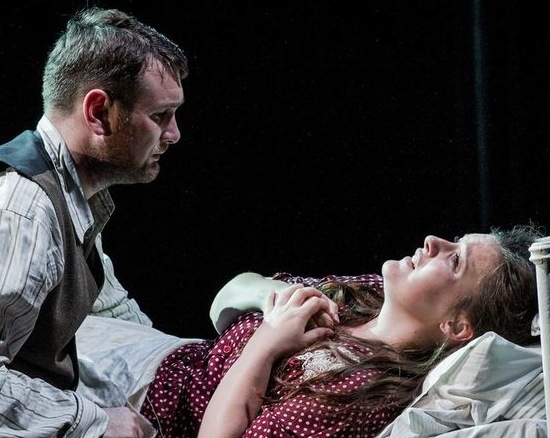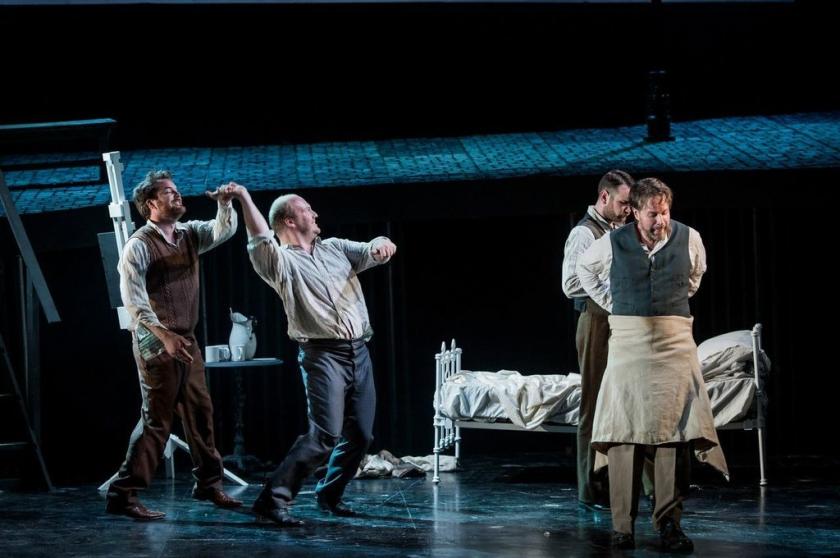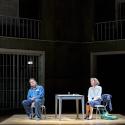Having spent most of the summer on Wagner’s Ring, Longborough are now giving, as a kind of bergamasque, an opera whose entire length would fit into the first act of Götterdämmerung. La Bohème is everything The Ring is not. It is concise, melodious, playful, sentimental and weepy. Yet oddly enough, it could never have been written without Wagner. Puccini’s ears were open to every kind of influence, and quick to transform everything into a personal expression. So Bohème thrives on leitmotifs, skilfully worked transitions, complex simultaneities, and thematic orchestration – all those devices Wagner laid down as the essence of music drama. And it never once sounds like Wagner.
As with Wagner, the small Longborough stage poses problems for Puccini’s sometimes intricate dramaturgy. But it also offers advantages. After all, Bohème is essentially a conversation piece with one big ensemble scene, and it works well close up. The director-designer, Richard Studer, has made the most of this. Cleverly using a two-tier set to bring the main action to the front of the stage, he can zoom in on the bohemian antics and love music of the outer acts, while reserving the upper level to give wider angles for the Café Momus and ironic depth to the third act, where Mimi overhears Rodolfo’s passionate complaints and avowals about her to Marcello.
 As yet, the execution of all this is less tidy than the concept, but that will improve (there was an excuse: a fuse blew at the end of Act 1, knocking out the stage monitors just in time for Momus, with all its complexities of ensemble and staging). Instead, the freshness of the singing and acting goes a long way towards papering over any cracks in the fabric of the performance. A youngish cast is in its element in this tragedy of student life; there are children close enough to watch their faces; and Studer’s staging, happily devoid of superfluous props, achieves atmosphere with suitably run-down costumery, a table here and a street lamp there – perhaps not quite the Paris of Murger, or even Puccini, but a pauper’s Paris of, I suppose, 1950s vintage, and discriminatingly lit by Wayne Dowdeswell.
As yet, the execution of all this is less tidy than the concept, but that will improve (there was an excuse: a fuse blew at the end of Act 1, knocking out the stage monitors just in time for Momus, with all its complexities of ensemble and staging). Instead, the freshness of the singing and acting goes a long way towards papering over any cracks in the fabric of the performance. A youngish cast is in its element in this tragedy of student life; there are children close enough to watch their faces; and Studer’s staging, happily devoid of superfluous props, achieves atmosphere with suitably run-down costumery, a table here and a street lamp there – perhaps not quite the Paris of Murger, or even Puccini, but a pauper’s Paris of, I suppose, 1950s vintage, and discriminatingly lit by Wayne Dowdeswell.
A lot hangs in Bohème on the lead duo, though I’ve known the work rescued by a dazzling Musetta. Not necessary here, though Fiona Murphy does sparkle in her waltz, taken quite slowly, then switches convincingly to the self-effacing angel of the last act. Katie Bird (pictured above right, with Robyn Lyn Evans) is a lovely, clear-voiced Mimi, always it seems with plenty in reserve at the top, where Puccini often piles on the orchestral volume. Robyn Lyn Evans, as Rodolfo, is not yet wholly equal to this requirement though his lightish spinto tenor is otherwise ideal for this music and will, for sure, fill out in time.
Their first-act duet, produced as a lonely-hearts set-up (the key dropped and the candles blown out all very candidly on purpose), is beautifully handled, the darker third-act duo, upstage, hardly less so. Grant Doyle is a strong Marcello with a fine lyrical streak of his own. Aidan Smith (Colline) and Gerard Collett (Schaunard) round out a good team of hopeless artists, somehow symbolized by Schaunard and his wretched coat, which he parts with like Dido lamenting Aeneas, to buy medicine that cures nothing.
The ensemble work, under the excellent Jonathan Lyness, is compellingly good, and will be even better when the electrics behave. Lovely singing and spontaneous acting from a smallish group of children, sprightly chorus work from Momus’s Christmas clientele, and fine orchestral playing throughout. Perhaps Puccini shouldn’t feel like a relief after the rigours of Valhalla. But he does.















Add comment